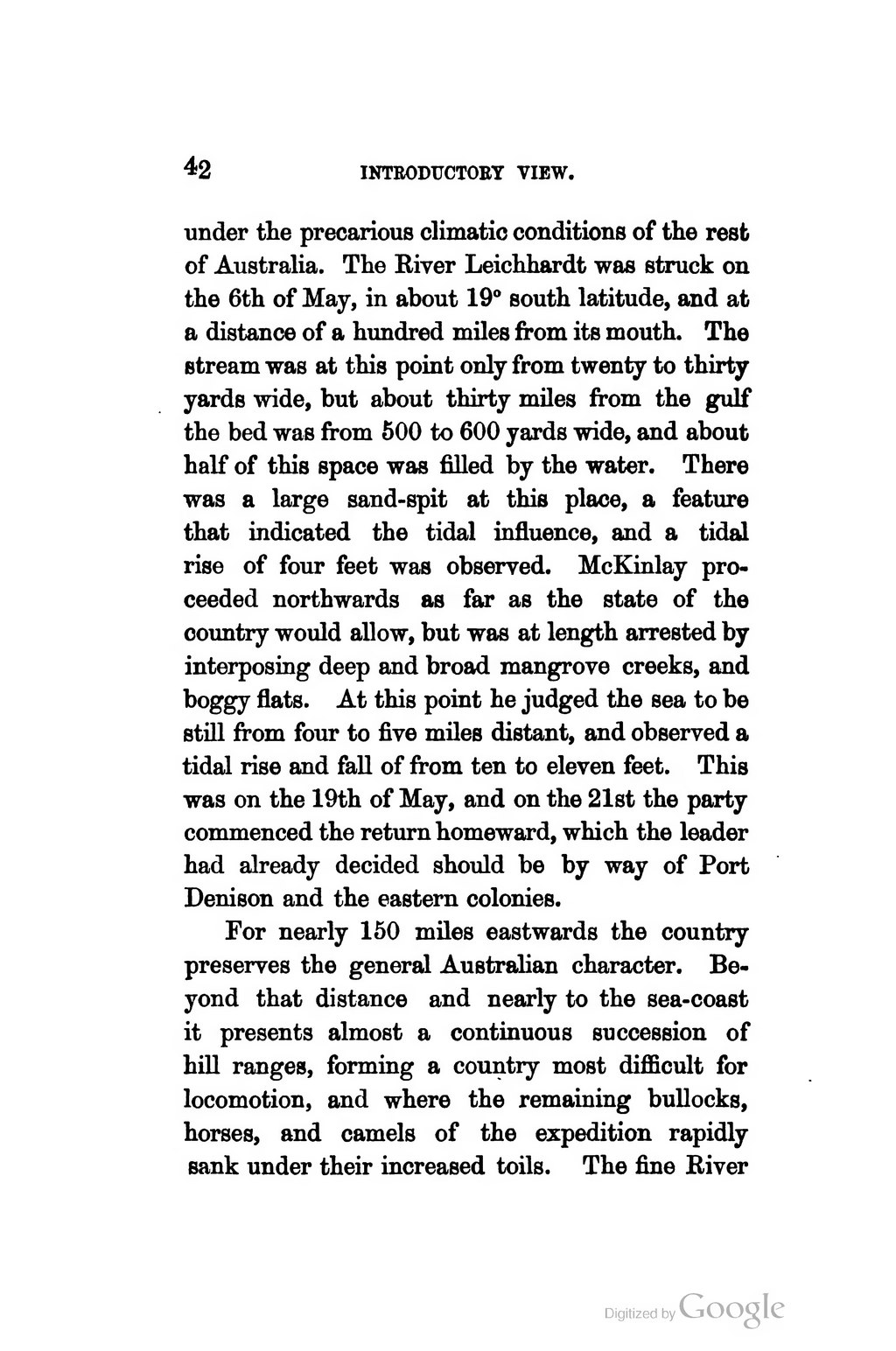under the precarious climatic conditions of the rest of Australia. The River Leichhardt was struck on the 6th of May, in about 19° south latitude, and at a distance of a hundred miles from its mouth. The stream was at this point only from twenty to thirty yards wide, but about thirty miles from the gulf the bed was from 500 to 600 yards wide, and about half of this space was filled by the water. There was a large sand-spit at this place, a feature that indicated the tidal influence, and a tidal rise of four feet was observed. McKinlay proceeded northwards as far as the state of the country would allow, but was at length arrested by interposing deep and broad mangrove creeks, and boggy flats. At this point he judged the sea to be still from four to five miles distant, and observed a tidal rise and fall of from ten to eleven feet. This was on the 19th of May, and on the 21st the party commenced the return homeward, which the leader had already decided should be by way of Port Denison and the eastern colonies.
For nearly 150 miles eastwards the country preserves the general Australian character. Beyond that distance and nearly to the sea-coast it presents almost a continuous succession of hill ranges, forming a country most difficult for locomotion, and where the remaining bullocks, horses, and camels of the expedition rapidly sank under their increased toils. The fine River

